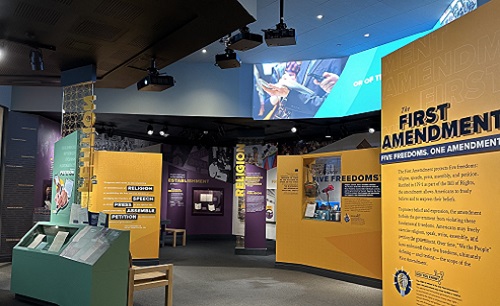This activity is part of Module 4: Constitutional Convention and Ratification from the Constitution 101 Curriculum.
When the Constitution was signed by the framers at the Constitutional Convention on September 17, 1787, it was a mere proposal. The delegates sent our nation’s charter back to the American people for ratification. So, even though the framers spent months hammering out a new framework of government, they left the final decision to the American people—acting state-by-state through specially elected state ratifying conventions. The American people were free to say “yes” or “no.”
In the framers’ view, only the American people themselves had the authority to tear up the Articles of Confederation and establish a new government. James Madison explained this well—describing the Constitution (in Federalist No. 40) as “of no more consequence than the paper on which it was written” unless ratified by the American people. In other words, it didn’t matter that the new Constitution was signed by America’s two most beloved figures—George Washington and Benjamin Franklin—and written by some of the nation’s best constitutional (and political) thinkers. It wasn’t up to them. It was up to the American people.
That’s a great example of one of the Constitution’s core principles: popular sovereignty—rule by “We the People”—government rooted in the consent of the governed. The ratification process was the framers’ attempt to make popular sovereignty a reality—a living, breathing thing in the world. For them, the foundation of all political power—the very legitimacy of our Constitution and the national government itself—rested with us: the American people.
How was the ratification process supposed to work? In other words, what were the specific rules of the game? Under Article VII of the new Constitution, the new government would go into effect if nine states ratified—in other words, if nine states said “yes.” Each state would elect delegates to its own state ratifying convention. From there, each ratifying convention would then debate the Constitution and decide whether to support it (or not).
Of course, we know how this story ended. The supporters of the new Constitution—the Federalists—won the battle over ratification. And the American people voted to adopt the new Constitution. To us today, this whole story may lack drama. It may seem inevitable. Far from it! The American people almost said “no!”
The battle over ratification—pitting the Federalists (supporters of the Constitution) against the Anti-Federalists (opposing the Constitution)—was very close. Just a few shifted votes in a few important states like Massachusetts, Virginia, or New York may have changed the entire outcome. The new Constitution may have failed. The Anti-Federalists may have won.
But of course, the Federalists did win. And because of the brilliance of the Federalists’ new Constitution, the force of their political (and constitutional) arguments, their willingness to compromise, and a little bit of luck, the American people said “yes”—they ratified—the U.S. Constitution.
Ratification Timeline:
The first state to ratify the Constitution was Delaware (unanimous)—on December 7, 1787.
Delaware was quickly joined by four other states:
- Pennsylvania (46–23, on December 12, 1787)—which was a bitter fight
- New Jersey (unanimous, on December 18, 1787)
- Georgia (unanimous, on January 2, 1788)
- Connecticut (128–40, on January 9, 1788)
However, the Constitution—and its supporters—then ran into serious, organized opposition in the important state of Massachusetts. The Massachusetts Convention was closely divided between Federalists and Anti-Federalists. And two of the state’s leading voices—Samuel Adams and John Hancock—emerged as critics of the Constitution. As part of the debates in the Massachusetts Convention, many Anti-Federalists called for amendments to the new Constitution.
To get to “yes,” the Federalists brokered a compromise with Adams and Hancock. Under this “Massachusetts Compromise,” a majority of delegates agreed to ratify the new Constitution, but only if the Convention agreed to recommend a set of amendments to the new Congress following ratification.
- The Massachusetts Convention finally voted in favor of ratification on February 6, 1788.
This Massachusetts Compromise paved the way for the Constitution’s ratification—with later states following Massachusetts’s example and brokering similar compromises to secure the support of many critics of the Constitution. Every remaining state convention—except for Maryland’s—recommended amendments as part of their decision to ratify.
Here’s the ratification timeline for the next wave of states.
- Maryland, April 28, 1788 (63–11)
- South Carolina, May 23, 1788 (149–73)
- New Hampshire, June 21, 1788 (57–47)
- Virginia, June 25, 1788 (89–79)—in a close fight
- New York—in another bitterly close fight—on July 26, 1788 (30–27)
So, by the end of July 1788, 11 states had ratified the new Constitution, including critical states like Pennsylvania, Massachusetts, Virginia, and New York.
Interestingly, the final two states—North Carolina and Rhode Island—wouldn’t ratify the Constitution until after the new government was already established.






